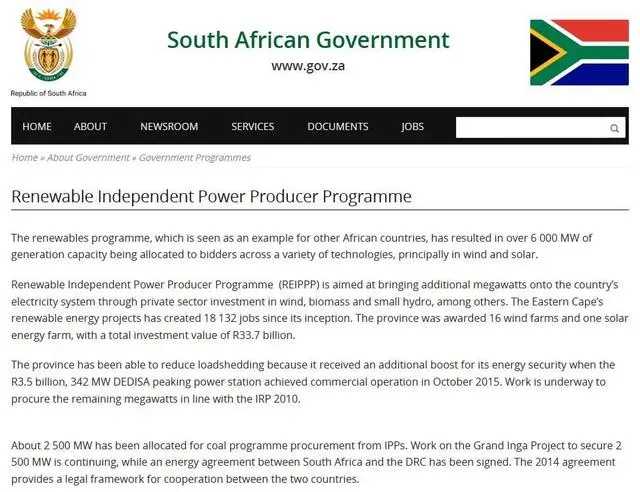Power shortages have been a major problem in South Africa in recent years. The fundamental reason is that South Africa's power energy structure is relatively simple, and its energy supply and power supply are highly dependent on coal. Among them, 95% of South Africa's electricity consumption is supplied by the national electricity company (ESKOM).
This makes South Africa have to take short-term load-shedding measures (load-shedding, the practice of temporarily cutting off power when the power consumption exceeds the distribution capacity) during the peak period of power consumption, which has caused certain influence to South Africa's life and economic development.
In response to the power crisis in South Africa, the South African government has taken several initiatives to promote the transformation of the country's energy structure.
In response to the power crisis in South Africa, the South African government has taken several initiatives to promote the transformation of the country's energy structure.

| Integrated Resource Plan
The Integrated Resource Plan (IRP) is a long-term energy plan that aims to increase the share of renewable energy in South Africa's energy mix and reduce reliance on coal-fired power plants.
The plan stipulates that wind power and solar power should be vigorously developed. By 2030, South Africa will add 29,000MW of installed power capacity, of which the total new installed capacity of wind power and photovoltaic power generation will be 20,400MW, accounting for about 70%.

| Independent Power Producer Program
The Independent Power Producer Program (hereinafter referred to as IPP) aims to encourage the private sector to invest in renewable energy projects, allowing private producers to sell excess power generation to the national grid.
The program has successfully attracted significant investment in the renewable energy sector, with more than 6,000 MW of installed renewable energy capacity already connected to the grid by 2022.
In addition, the South African government also implements various energy efficiency programs, including implementing energy efficiency standards for buildings and electrical appliances, launching public awareness campaigns, and encouraging energy-saving practices in society.
South Africa had 1,329 MW of installed solar capacity in 2016, according to statistics from the International Energy Agency. According to statistics from the South African Photovoltaic Industry Association (SAPVIA), by the end of 2021, the total installed capacity of solar photovoltaic systems in South Africa will reach 3.7GW. The South African government has set a target of 18.2GW of renewable energy by 2030, a significant portion of which will come from solar photovoltaic systems.
Solar energy products have huge market potential in South Africa. Common solar system accessories such as photovoltaic panels, inverters, controllers, batteries, etc.